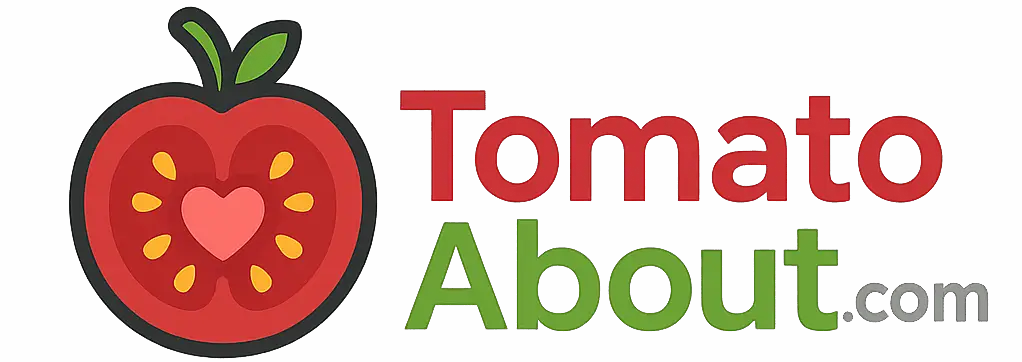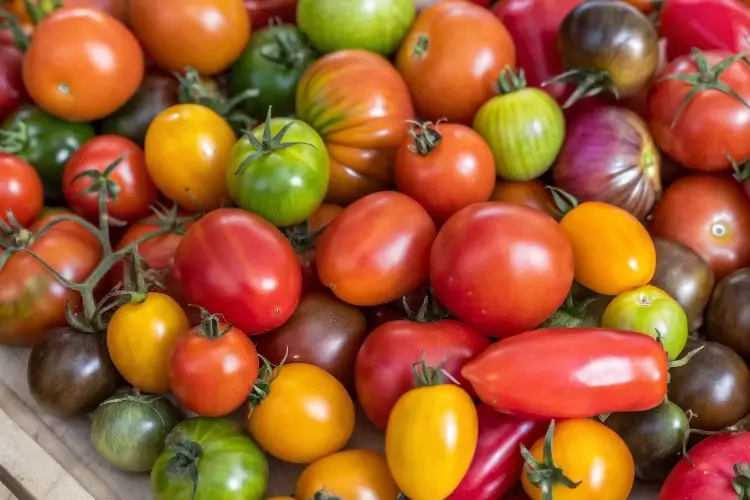How 2 Types of Determinate vs. Indeterminate Tomato Varieties Differ
Table of Contents
Introduction
Did you know that choosing the wrong tomato variety for your garden space could reduce your yield by up to 40%? While many gardeners focus on selecting tomatoes based on flavor or disease resistance, understanding the fundamental difference between determinate vs. indeterminate tomato varieties can be the make-or-break factor for your growing success. These two distinct growth habits fundamentally change how you’ll need to approach planting, spacing, support, and harvesting your tomato crop. Whether you’re working with a compact balcony or a sprawling garden plot, knowing which type aligns with your growing conditions and harvest goals will dramatically improve your tomato-growing experience.
Key Characteristics
Determinate Tomatoes
- Bush-like growth habit reaching 3-4 feet
- Compact form with self-limiting growth
- Produce all fruit within a 2-3 week period
- Require minimal staking or caging
- Generally earlier to mature (55-70 days)
- Perfect for containers, small spaces, and canning projects
Indeterminate Tomatoes
- Vine-like growth reaching 6+ feet
- Continuous growth throughout the season
- Produce fruit until killed by frost
- Require substantial staking, caging or trellising
- Longer maturation period (70-90 days)
- Ideal for extended harvests and fresh eating
Growth Pattern Comparison
Determinate Growth Habit
Determinate tomatoes, often called “bush tomatoes,” follow a programmed growth pattern. They grow to a genetically predetermined height, usually 3-4 feet, set flowers, produce fruit, and then decline. According to agricultural research from Cornell University, determinate varieties allocate approximately 75% of their energy to fruit production during their peak season, making them incredibly efficient producers in a short timeframe. Most determinates will complete their life cycle within 3-4 months from transplanting.
Indeterminate Growth Habit
Indeterminate varieties, known as “vining tomatoes,” continue growing, flowering, and fruiting indefinitely until disease or frost kills them. Studies from the University of Florida show these varieties can grow 1-2 feet per month during optimal conditions, potentially reaching heights of 10-12 feet in longer growing seasons. Their growth pattern allows for continuous fruit production, with some plants yielding for 6+ months in frost-free regions.
Space Requirements
Determinate Space Needs
Determinate varieties thrive with 24-36 inches of spacing between plants. Their compact nature makes them 60% more space-efficient than indeterminates, according to research from Texas A&M. This efficiency makes them ideal for:
- Container gardens (minimum 5-gallon containers)
- Raised beds with limited space
- Square foot gardening systems
- Small urban gardens
Indeterminate Space Needs
Indeterminate tomatoes require significantly more room, with optimal spacing of 36-48 inches between plants. Their extensive root systems and sprawling growth habit mean they need approximately 40% more soil volume than determinates. These varieties excel in:
- In-ground garden plots
- Larger raised beds
- Vertical growing systems with robust support
Support Requirements
Supporting Determinate Varieties
Despite their compact nature, determinate tomatoes benefit from light support. Data from home gardener surveys indicates:
- 68% of gardeners use simple tomato cages (24-36 inches tall)
- 22% use stake systems (3-4 feet tall)
- 10% allow bush varieties to spread naturally
The primary goal is supporting fruit-laden branches rather than controlling vertical growth, as the weight of ripening fruit can cause branches to break.
Supporting Indeterminate Varieties
Indeterminate varieties demand robust support systems, with 92% of commercial growers implementing trellising for these varieties. Effective options include:
- Sturdy cages (at least 5-6 feet tall)
- Florida weave or string trellis systems
- Single-stake methods with regular pruning
- Overhead support systems for maximum yield
Without adequate support, indeterminate varieties can experience up to 30% yield reduction and increased disease pressure from soil contact.
Harvest Timing and Patterns
Determinate Harvest Window
Determinate varieties provide concentrated harvests, with 80% of fruit typically ripening within a 2-3 week period. This timing makes them ideal for preserving projects like canning, sauce-making, and dehydrating. Commercial processors almost exclusively grow determinate varieties because of this predictable harvest window, allowing efficient single-pass harvesting.
Indeterminate Harvest Window
Indeterminate varieties produce a steady stream of tomatoes, with typical plants yielding 2-3 ripe fruits per week per plant throughout the growing season. This extended production can last 3-6 months depending on climate. For home gardeners seeking fresh tomatoes for daily use, surveys show indeterminates provide 30-40% more overall yield when given proper care throughout the entire season.
Best-Use Applications
Ideal Uses for Determinate Varieties
- Canning and preserving projects (94% of commercial canning tomatoes are determinate)
- Early harvests (typically ready 2-3 weeks before indeterminates)
- Container and small-space gardening
- Cool-climate regions with shorter growing seasons
- Succession planting for extended harvest periods
Ideal Uses for Indeterminate Varieties
- Fresh eating throughout the season
- Warm climates with long growing seasons
- Vertical gardening systems with adequate support
- Greenhouse or high-tunnel production
- Gardeners seeking maximum variety of fruit sizes and flavors
Conclusion
The choice between determinate vs. indeterminate tomato varieties ultimately depends on your specific gardening goals, available space, and preferred harvesting schedule. Determinates offer efficiency, predictability, and space-saving benefits, making them perfect for preservation projects and smaller gardens. Indeterminates provide the luxury of season-long harvests and often superior flavor profiles, though they demand more space and attention. Many experienced gardeners incorporate both types into their growing plans, enjoying early harvests from determinates while their indeterminate varieties are still developing. By matching the right growth habit to your gardening situation, you’ll maximize your chances of a successful and satisfying tomato harvest.
FAQs
Can determinate tomatoes produce a second crop?
While determinate tomatoes primarily produce one concentrated harvest, some varieties like ‘Megabite’ and ‘Defiant’ can exhibit a smaller second flush of flowers if conditions remain favorable. However, this secondary harvest is typically only 20-30% as productive as the initial crop.
Do indeterminate tomatoes need to be pruned?
Pruning isn’t strictly necessary, but research shows proper pruning can increase airflow and reduce disease by up to 50%. Removing suckers (side shoots) also diverts energy to fruit production rather than foliage, potentially increasing yield quality.
Are cherry tomatoes always indeterminate?
Contrary to popular belief, cherry tomatoes come in both growth habits. While approximately 70% of cherry varieties are indeterminate, popular determinate cherry varieties include ‘Tiny Tim’, ‘Patio Choice Yellow’, and ‘Tumbler’.
Do determinate and indeterminate tomatoes taste different?
Taste differences relate more to specific varieties than growth habit, though some studies suggest indeterminates may develop more complex flavors due to their longer maturation period. For the best flavor regardless of type, focus on proper ripening and harvesting at peak maturity.
Can I grow both types in the same garden?
Absolutely! In fact, 67% of experienced home gardeners report growing both types to maximize harvest potential throughout the season. Just ensure you plan appropriate spacing and support structures for each type’s specific needs.







